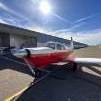ACF-50 treatment quotes?
-
Members Online
- TCC
- Sabremech
- Jetpilot86
- spistora
- 47U
- eman1200
- Guy123
- Robm
- Hank
- mluvara
- milotron
- Echo
- Tom F
- IvanP
- MikeOH
- 7.Mooney.Driver.0
- jamesyql
- redbaron1982
- Thedude
- 1980Mooney
- 00-Negative
- N201MKTurbo
- Scooter
- Shadrach
- tcal780
- Flyler
- wburger1
- Mobius708
- Aaviationist
- PeytonM
- hammdo
- atpdave
- Scottknoll
- M20F
- dkkim73
- Marc_B
- MoonFlyer68
- Bartman
- tailgator


Recommended Posts
Join the conversation
You can post now and register later. If you have an account, sign in now to post with your account.